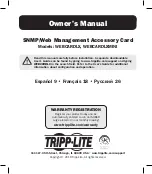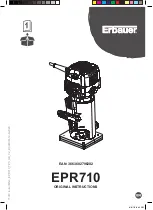
performance level. The power margin (P
M
) is the amount of power available after
attenuation or link loss (LL) has been subtracted from the power budget (P
B
).
When you calculate the power margin, you use a worst-case analysis to provide a margin
of error, even though all the parts of an actual system do not operate at worst-case
levels. A power margin (P
M
) greater than zero indicates that the power budget is sufficient
to operate the receiver and that it does not exceed the maximum receiver input power.
This means the link will work. A (P
M
) that is zero or negative indicates insufficient power
to operate the receiver. See the specification for your receiver to find the maximum
receiver input power.
Before you begin to calculate the power margin:
•
Calculate the power budget. See
“Calculating the Fiber-Optic Cable Power Budget for
a QFX Series Device” on page 93
To calculate the worst-case estimate for the power margin (P
M
) for the link:
1.
Determine the maximum value for link loss (LL) by adding estimated values for
applicable link-loss factors—for example, use the sample values for various factors
as provided in
(here, the link is 2 km long and multimode, and
the (P
B
) is 13 dBm):
Table 37: Estimated Values for Factors Causing Link Loss
Sample (LL) Calculation Values
Estimated Link-Loss Value
Link-Loss Factor
0.5 dBm
Multimode—0.5 dBm
Higher-order mode losses
(HOL)
0 dBm
Single-mode—None
0 dBm
Multimode—None, if product of
bandwidth and distance is less
than 500 MHz/km
Modal and chromatic
dispersion
0 dBm
Single-mode—None
This example assumes five connectors. Loss for five
connectors: 5 (0.5 dBm) = 2.5 dBm
0.5 dBm
Connector
This example assumes two splices. Loss for two splices:
2 (0.5 dBm) = 1 dBm
0.5 dBm
Splice
This example assumes the link is 2 km long. Fiber
attenuation for 2 km: 2 km (1 dBm/km) = 2 dBm
Multimode—1 dBm/km
Fiber attenuation
This example assumes the link is 2 km long. Fiber
attenuation for 2 km: 2 km (0.5 dBm/km) = 1 dBm
Single-mode—0.5 dBm/km
1 dBm
1 dBm
Clock Recovery Module
(CRM)
Copyright © 2014, Juniper Networks, Inc.
94
QFX5100 Switch Hardware Guide
Summary of Contents for QFX5100
Page 1: ...QFX5100 Switch Hardware Guide Published 2014 06 03 Copyright 2014 Juniper Networks Inc...
Page 8: ...Copyright 2014 Juniper Networks Inc viii QFX5100 Switch Hardware Guide...
Page 12: ...Copyright 2014 Juniper Networks Inc xii QFX5100 Switch Hardware Guide...
Page 20: ...Copyright 2014 Juniper Networks Inc 2 QFX5100 Switch Hardware Guide...
Page 30: ...Copyright 2014 Juniper Networks Inc 12 QFX5100 Switch Hardware Guide...
Page 50: ...Copyright 2014 Juniper Networks Inc 32 QFX5100 Switch Hardware Guide...
Page 60: ...Copyright 2014 Juniper Networks Inc 42 QFX5100 Switch Hardware Guide...
Page 106: ...Copyright 2014 Juniper Networks Inc 88 QFX5100 Switch Hardware Guide...
Page 114: ...Copyright 2014 Juniper Networks Inc 96 QFX5100 Switch Hardware Guide...
Page 124: ...Copyright 2014 Juniper Networks Inc 106 QFX5100 Switch Hardware Guide...
Page 125: ...107 Copyright 2014 Juniper Networks Inc Chapter 11 Compliance...
Page 126: ...Copyright 2014 Juniper Networks Inc 108 QFX5100 Switch Hardware Guide...
Page 128: ...Copyright 2014 Juniper Networks Inc 110 QFX5100 Switch Hardware Guide...
Page 130: ...Copyright 2014 Juniper Networks Inc 112 QFX5100 Switch Hardware Guide...
Page 176: ...Copyright 2014 Juniper Networks Inc 158 QFX5100 Switch Hardware Guide...
Page 178: ...Copyright 2014 Juniper Networks Inc 160 QFX5100 Switch Hardware Guide...
Page 188: ...Copyright 2014 Juniper Networks Inc 170 QFX5100 Switch Hardware Guide...
Page 206: ...Copyright 2014 Juniper Networks Inc 188 QFX5100 Switch Hardware Guide...
Page 230: ...Copyright 2014 Juniper Networks Inc 212 QFX5100 Switch Hardware Guide...
Page 242: ...Copyright 2014 Juniper Networks Inc 224 QFX5100 Switch Hardware Guide...
Page 254: ...Copyright 2014 Juniper Networks Inc 236 QFX5100 Switch Hardware Guide...
















































